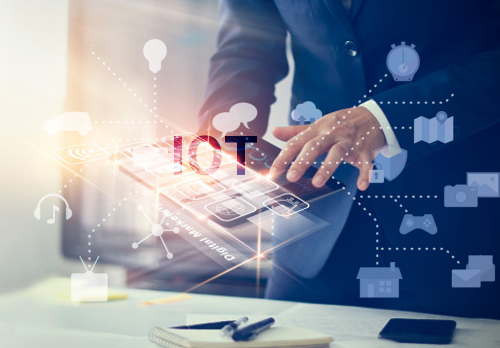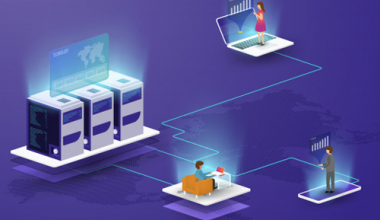The Internet of Things (IoT) can be characterized as an extension of the Internet and other network connections to various sensors and devices, or “things,” giving even basic objects, like lightbulbs, locks, and vents, a higher level of computing and analytical capabilities.
One of the crucial elements of the IoT that contributes to its rising popularity is interoperability. In the Internet of Things (IoT), connected or “smart” objects (things) have the capacity to collect and transmit data from their surroundings to other objects and networks.
Devices are able to work with little to no human input through the analysis and processing of data.
The IoT is continuing to develop as a result of the rising number of connected devices, adding new layers to the data that is already shared and processed and giving rise to complex algorithms that lead to higher levels of automation.
Additionally, the IoT has made a multitude of applications possible for both individual users, various industries and sectors , especially more recently the medical sector.
The Internet of Things will grow and develop over the next few years.
Checkout the IoT trends mentioned below that will have a major impact in coming years.

Internet of Medical Things (IoMT) Continues to Expand
The COVID-19 epidemic has expedited the adoption of the Internet of Medical Things due to the rise in demand for hands-free health solutions (IoMT).
43% of US households reported using these services in 2021, and 64% said they planned to do so after the outbreak. These signs point to continued IoMT growth in 2022.
For instance, wearable health monitoring will become more popular as a supplement to care provided at home. Through IoT connections, hospitals can manage resources and hold remote consultations.
Even post Covid, these trends will continue to advance in order to increase access to healthcare.
Security is the Priority
Worrying security issues are becoming more prevalent as the Internet of Things grows in popularity. At rush hour, a breach in a network of connected cars may cause almost 3,000 fatalities.
Security will rise in importance as the number of IoT devices developed rises along with cybercrime.
IoT device manufacturers will incorporate additional built-in security measures including secret computing and verification procedures for over-the-air updates.
Security service providers will offer extra IoT-specific services to complement that update. While they won’t be eliminated entirely, vulnerabilities will be lessened.
5G driven IIoT
The Industrial Internet of Things (IIoT) is one the most promising technologies today. But the low capacity and excessive latency of present networks hinders its deployment. With the launch of 5G in 2022, all of that is changing.
Currently there are approximately 48 billion devices linked to the internet, which obviously strains the networks.
Since the 5G network has quicker speeds, lower latency, and more capacity than previous networks, industrial facilities will be able to deploy the IIoT to additional locations. It is feasible to assemble complete factories into coherent, interconnected entities.
Growth of Edge Computing
Another inescapable innovation that will materialize as IoT networks expand is edge computing. In addition to improving the viability of self-driving cars, edge computing has the potential to address many of the bandwidth, security, and cloud dependability issues that are now present.
Despite these advantages, it is still a niche technology today, but this will change as the Internet of Things grows.
Edge computing will improve in dependability and scalability as IoT security and processing power develop. As the infrastructure for smart cities grows, this technology may begin to impact consumer applications.
Wearables at New Levels
Wearable technology is one of the most widely used consumer IoT applications, and this trend is expected to continue until 2022. The market for wearables is currently dominated by smartwatches and wristbands, but as they become more diverse, this will change.
The use of smart rings, smart glasses, connected apparel, and IoT ID badges is currently widespread and will continue to grow.
Between 2016 and 2019, the number of connected wearables more than doubled, a trend that will be fueled by a wider range of services.
Wearables will, among other things, help businesses reduce workplace accidents by 2022, extend the use of augmented reality (AR) apps, and enhance accessibility for those with disabilities.




